Potentilla (lat. Potentilla) - unpretentious herbaceous plant from the family of pink. In nature, there are more than 500 types of laptops. There are both low-spirited shrubs, tall and creeping copies, which are used by summer houses and flowers for decorating flower, borders, rocaries and alpine slides. The most popular in dachniks perennial species of plants that do not require special care and at the same time long and beautifully bloom.
The color of the plant flowers is so diverse that it is possible to be confused when choosing a color gamut of the country area. Flowers like yellow, red, snow-white, orange, cream, pink gentle flowers. Plant flowering time from May to September. The most widespread culture in the Urals, the Caucasus, Western Siberia, where the shrub pallet is often called "Kuril tea" or "five hundred". For the first time, the laptice was found precisely on the Kuril Islands, from where it has already spread throughout Russia and to other countries. Since ancient times, the leaves of laptic, rich in vitamin C, essential oils and Tanin, were used as a healing tea, which heals the cold and quickly puts on his feet. Today is an excellent decorative plant, beloved by landscape designers and flowers for its unpretentiousness, simplicity and bright long blossoms throughout the summer season.
Laptop, description and types of plants
Phackle - a plant represented by numerous types of annuals, two-year, perennial crops, among which there are both shrub and herbaceous species.
Lapper shrub. Perennial shrub culture with a thick spherical crown. The height of the shrub reaches up to 1.5 meters. This is the most common type of kind, which the people are called "Curil Tea" or "five hundred". Compact severe bushes in nature can often be found on the stony slopes, the cripples, in the cracks of the rocks on the peelets, where they form overgrown. The leaves of the laptop shrubs are slightly pubescent, dissected on 5 pieces, flowers are quite large, collected in inflorescences. In the center of the flower - the set of stamens, because of which his middle looks fluffy.
The beginning of the flowering of the Shrub Pepper Jun, continues until October. There are shrubs with various color of flowers, but most often the bloom of the lappache shrub is like blossoming an apple tree or rosehip. After flowering, a seed is formed - a box in the shape of a brown button, which gives additional decorative culture.

Among the most popular varieties can be allocated:
- Abbotswood - bush, up to 1 meter high, with a soup with a dense crown. Leaves have a light green shade, white flowers are collected in small brushes. Shrub perfectly looks in mountaineering, in group landings with other plants, is used to decorate borders.
- Gilford Crim - high bush, up to 1.5 heights. Crown - dense, pillowless, leaves have a dark green shade. Flowers - large, cream or white shade.
- Red Es - shrub height up to 70 cm, Crohn is wide - up to 1.3 meters wide. Feature varieties - pinching shoots. Leaves - dark green, blooms with bright flowers in orange-red tones.
- Pink Queen is a beautiful shrub up to 80 cm high, blooms soft pink flowers, flowering time from June to September.
- Hoppi Orange is a low bush up to 0.5 meters of height with a wide meter crown. One of the most endless and winter-hardy varieties.
Papelty Apennine. A perennial plant from the mountain part of Europe, where it grows at an altitude of more than 1500 meters. Plant height from 5 to 15 cm, the leaves are tremendous, pubescent, with a silver tint. Flowers with pink or white flowers, up to 15 mm in diameter, flowering time - end of summer. Used to decorate alpinarians, crevices of stones in landscape design.
White bloodroot. A perennial plant of origin from the central part of Europe and Russia. Height from 8 to 25 cm. Stems and leaves are covered with silk, pressed hairs. It has complicated root leaves with finger-blade with dark brown horses. It blooms with small white flowers on long flowers, up to 3 cm in diameter, from May to August. Unpretentious culture, however, does not endure scorching sunlight and oversupply moisture in the soil.
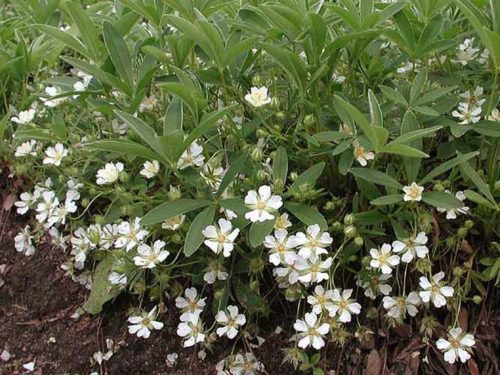
Laptop goose, or goose paw. Soil, unpretentious culture, widespread in Russia. Leaves Curilates, coarse, flowers with small yellow single flowers, up to 2 cm in diameter. Draweros are noble. The plant is not demanding, grows throughout, along the roads, motorways - where other plants will not survive. 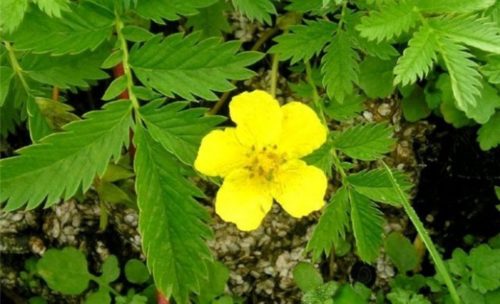
Nepalskaya Phackle. A long-term grassy view, a height of the bush to half a meter. His homeland consider Nepal and Western Himalayas. Stems are straight, branched, painted in a purple shade. This variety leaves are rather large, palpid, up to 30 cm in length, dark green. Flowers are bright, large, red, pink shades, with dark pink streaks, are collected in panicles. Beginning of flowering - July, duration - 55 days. 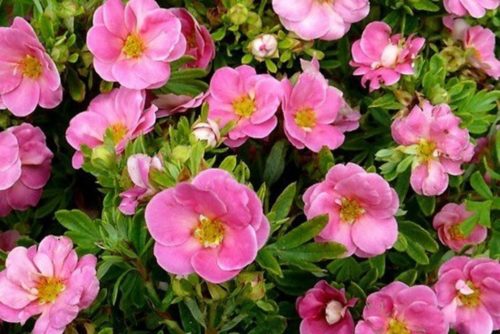
Among the Nepalese hybrid varieties are found, the most of them are common:
- Miss Wilmt-curved cherry-pink flowers with dark eye.
- Roxana - Flowers of salmon-orange color with thin dark streaks.
Pepper is represented (straight, or calgant). Perennial with thickened wood rhizome, in the wild growing in the forests, tundra, on the banks of rivers, lakes, swamps. The plants stem is a reprehensive, up to 20 cm high, the upper part of the bush - without foliage. Flowers are single, the right shape, up to 1 cm in diameter, grow on long thin flowers. The flowering period is June - August.
Phackle - landing
The plant of the Phackle is undemanding to the conditions of cultivation, so the cultivation of the laptop in the country area is one pleasure. The exception is only white nepochtka, which grows exclusively in the shade and does not endure excessive humidity. All other numerous species prefer bright, shaded at noon. Excess sunlight is poorly reflected in the appearance of flowers. Gentle petals quickly burn out under the scorching sunshines and lose their appeal. The lack of light can suspend flowering or lead to a slow growth of the plant.
Soil selection for landing
The perfect primer for laptop is thin soil, although it can grow on any types of soils in which additional feeders need to be made. Especially demanding to the composition of the soil variety with pink flowers. 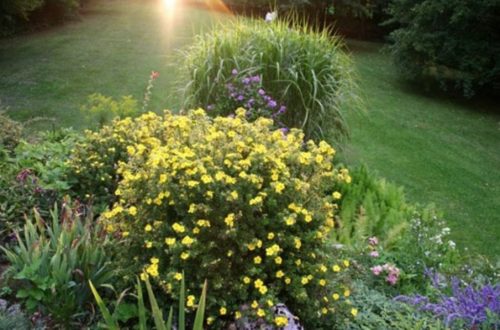
Landing the saplings of the laptop in the ground
Laptop shrub is the most popular plant variety, which is used by summer houses for the decoration of the garden and giving. Its landing is made in spring or autumn.
- When landing seedlings it should be borne in mind that this type of laptop root system is superficial, so the landing pits should be deep to 0.5 - 0.6 meters. Distance between landings - from 30 to 80 cm.
- At the bottom of the pit, the drainage layer of pebbles, rubble, broken brick, and from above - a layer of leaf land, mixed with humid and river sand in a 2: 2: 1 proportion. It is necessary to add about 100 grams of mineral fertilizers or ash to the soil mixture.
- The seedling is placed in the landing pit. The main condition for planting a seedling of the laptop is a neat arrangement in the plant's root plant. It must be higher than the soil level.
- Then the saplings are abundantly watered, mulch the soil around the bush: sawdust, dry bark, straw. Within a month after landing, it is necessary to maintain the humidity of the soil and not allow it to dry.
Papers - care
It is easy to care for the palter and under the power even novice flowerfish. It is enough to provide perennials regular and moderate watering, making fertilizers, produce timely trimming and weeding from weed grass under the bushes.
Watering the laptic
The nepochtka blooms plentifully and is actively growing in a well-moistened soil, although it is considered a drought-resistant unpretentious culture. In the rainy summer, the plant may not need an additional watering. And in the hot summer it needs to provide watering 2-3 times a week, not allowing the drying of the soil. It is impossible to use cold, ice water to not harm the root system, it is better to water the bushes with warm water. After irrigation, it is recommended to shallow soil unluckly. In the evening, the palm can be sprayed. In a special irrigation, young seedlings need, they are watered often, spending up to 10 liters of warm water under one bush.
Standard laptic
The blooming perennial speaks well on making feeding. When planting a seedling, any mineral fertilizer or ash is added, and the plant can be filled with the following fertilizers to the following spring:
- During the period of active growth, in the spring it is necessary to make a subcorter of 30-40 grams of potassium sulfate and phosphate divorced in 10 liters of water, based on one plant.
- During the bootonization period, the soil fertilize phosphorus-potash complex fertilizers according to the instructions.
Pruning laptic
To maintain an attractive appearance of the shrub of the lappache and its decorativeness, it is necessary to regularly trim the crown of the plant. Trimming is carried out in early spring, before the renal disclosure or in the fall, by shortening the shoots by one third, giving the crown the necessary shape, as well as the removal of dry, broken, growing in the branches. Most often, the shrub is attached to the shape of a ball or pillow. After rejuvenation, active growth of shoots begins, stimulation of abundant flowering. In addition to trimming, the soil under the plant must be periodically loose, especially after watering, and remove weeds. 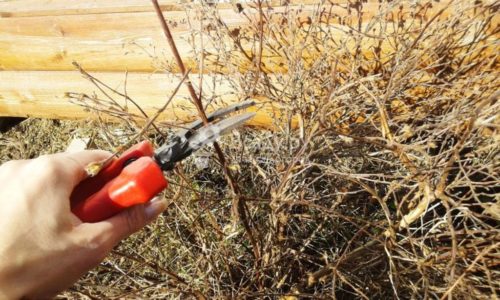
Lapper after flowering
In the fall, after flowering, when the plant will lose its decorativeness, annual types of husks are removed, and the area where it grew is dripping, adding to the fertilizer soil. After completing the flowering of shrubs, the shoots are shortened by a third and water the soil of the Bordeaux liquid as prophylactic purposes.
Laptop in winter
Perennial herbaceous and shrub species do not need winter shelter, as the plant is hardy to winter frost. It takes only cuttings and young seedlings that are planted in autumn. 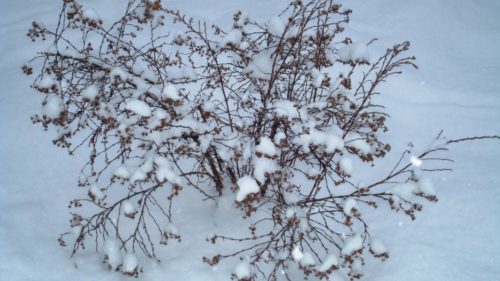
Lapper - reproduction
Like all garden plants, the nepochtka multiplies with seeds or a vegetative way.
The breeding of the laptop seeds
The seed way to plant the laptop is used less often than the vegetative and can only be experienced flowers that prefer to sow seeds immediately into the ground. However, for a good germination, it is recommended to produce seed seeds in the room using containers. Sowing seeds in the capacity produced in the last decade of February. For landing, a wide drawer is prepared with drainage holes, which is filled with nutrient soil. You can use peat and humus taken in the same proportion. Seeds are planted into wet soil, sprinkling a small layer of land, and are covered with transparent glass or film. The optimal temperature for germination of seedlings is - + 16-18 ° C. It is worth noting that some varieties of the hospitals multiply by self-sowing.
The breeding of the laptop stalks
The drawing is produced in July or August. For reproduction with cuttings, last year's shoots are chosen from which the leaves and flowers are removed, the cutting length from 8 to 10 cm. To root a cutlets in a wet pearlit or in the open soil by choosing a place shaded and protected from drafts in the garden. It is necessary to cover the cutlets with a can or a plastic bottle, creating it the conditions of greenhouse, not forgetting that the cuttings need to spray and ventilate several times a day. When the buds appears on the cutken, they should be removed so that they do not relax the rooting stalk. In winter, young plants need shelter.
Breeding of the laptop by challenges
The reproduction of the tanks is the simplest method of breeding the laptop. In the spring, choose a low growing plant escape, make an incision on its outside and put into a small one, pre-dug the groove. The incision should be located at the bottom of the groove, attach the metal spice to the Earth and sprinkle with soil. Already by the autumn, the tank forms a strong root system and can be separated from the mother's bush, transplanting to a permanent place.
Breeding of the laptop dividing bush
Adult bushes determine the method of division, the age of the maternal bush should reach 4 years. The bush is digging, washed its rhizome warm water and cut the root into parts using a sharp knife. Each part of the decene must have 2-3 kidneys. The roots of the deceive are treated in a growth stimulator and transplanted into the ground, not blocking the kidneys into the ground. The method of reproduction of the division of the maternal bush is used in spring, in April or in September.
Diseases and pests
Salting on the cottage or in the garden, a shrub pallet, you can not be afraid of the plant, because the perennial is practically not subject to illness and is not amazed by pests like other garden crops. But there is one disease that annoys the perennial species of the plant - rust. The disease is manifested by the appearance of yellow-brown spots on the green leaves. If the plant is not treated, its leaves dry and fall. To treat the plant from rust, preparations containing sulfur and boron are used, burglar liquid, also helps spraying by a solution of manganese. Experienced flowers are noticed that the rust on the plant appears if the bushes are planted near coniferous cultures. To avoid this disease, it is not necessary to plant the palm clock next to the conifers.
Among the pests of the laptop is sometimes an attack of the scoop, insecticides are effective in combating them: Fufanon, PhyTeerm.
Laptop: Useful properties
Along with the decorative properties of plants, the laptop is a healing plant. In folk medicine, the beneficial properties of the lappache shrub, which the people are called "Curil Tea" are widely used. Its leaves contain a large amount of vitamin C, A, essential oils. The infusion of plants from shoots is used to treat pyelonephritis, enurged in children, for washing the guns, the treatment of burns and boils. Apply with pain in the stomach, diarrhea. 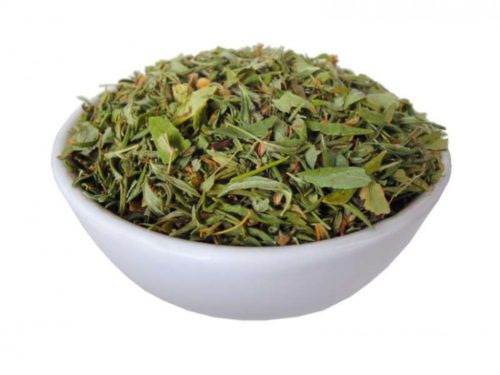
Lapps in landscape design
Due to prolonged and abundant flowering, as well as simplicity in cultivation, the nepochka won the hearts of many flower and landscape designers who decorate cottage sites, flower beds. Laptop shrub - the favorite of summer houses, wonderful looks in garden compositions as a blooming alive hedge. Shrubs that reach heights up to 1.5 meters are used for garden landscaping, their crown is attached to the shape of a ball or pillow. Luxurious bush looks in a single landing in the center of lawn. Low varieties - decoration of borders. The endurance and unpretentiousness of the laptop is used when creating a stone garden, rocaries, alpine slides. The nepochka fit harmoniously into any group landing. Speeciously looks like a bush with yellow flowers in the neighborhood with Barbaris, the scirey of paper, juniper, lavender. A varieties with bright pink, orange flowers, such as "Lavli Pink", "Red Ice" will decorate with its bloom any corner of the garden throughout the summer period.
Phackle is a beautiful plant that does not require increased attention, but will delight your owner long and long blossoms throughout the summer. If you decide to land on your summer cottage, highlight a suitable permanent location for it, where it will grow to 20-30 years, pleased and admiring the beauty for many years.

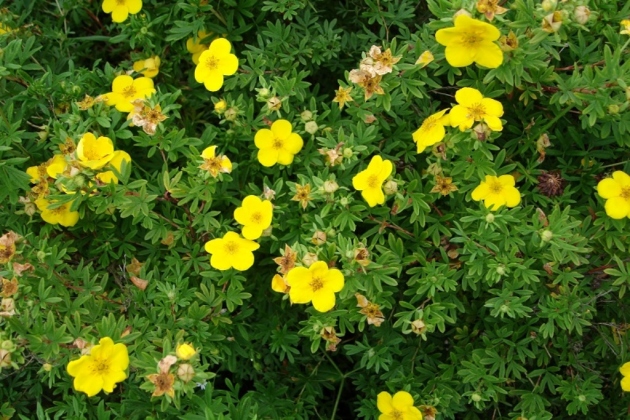
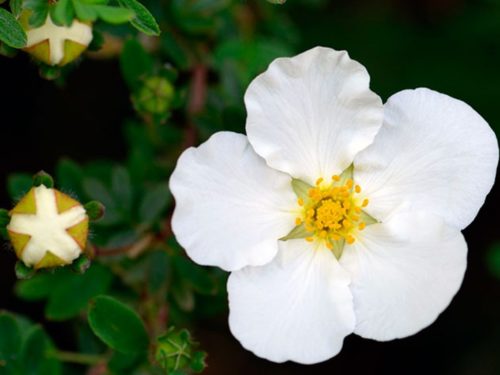
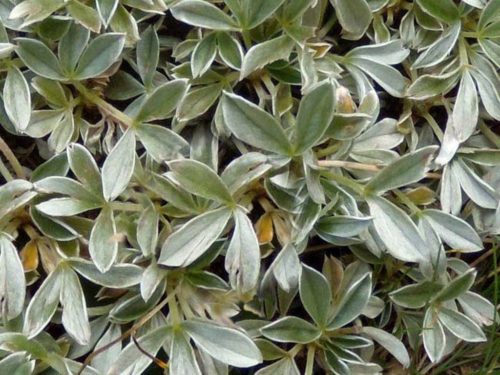
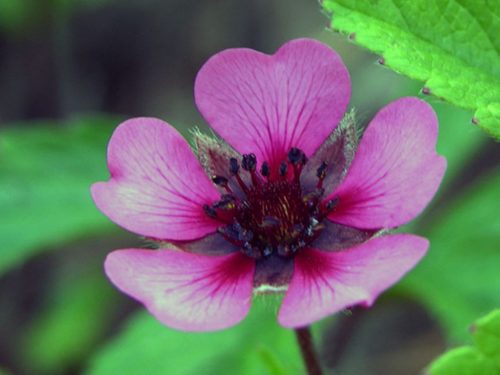
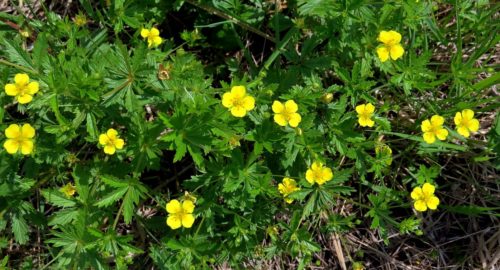
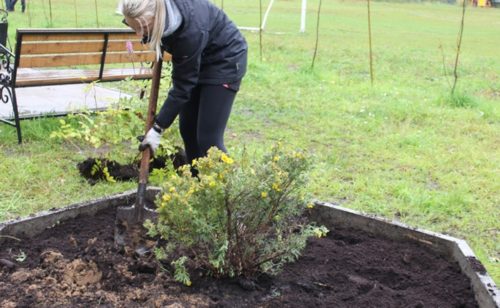
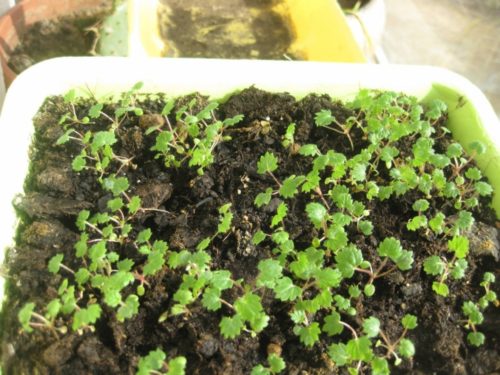
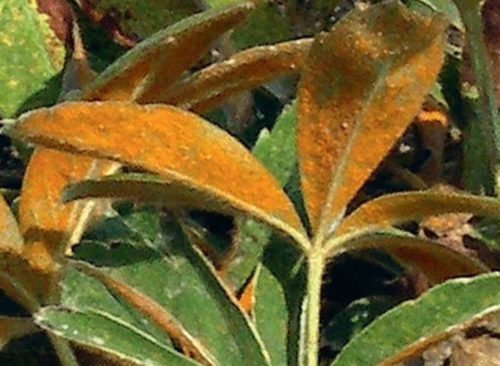
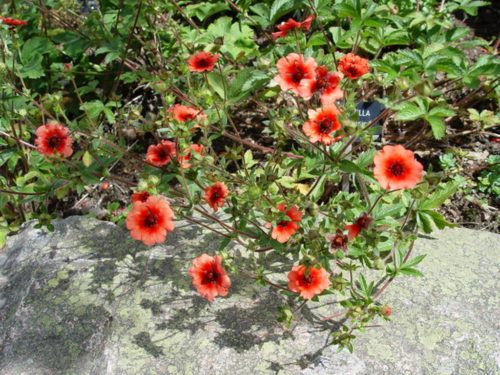
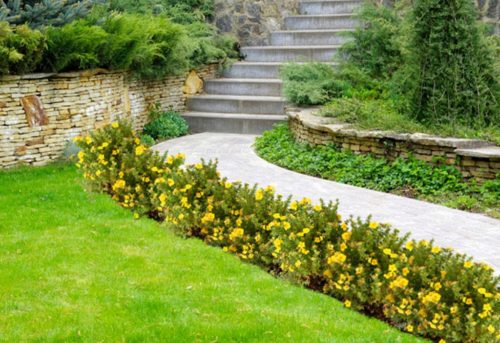
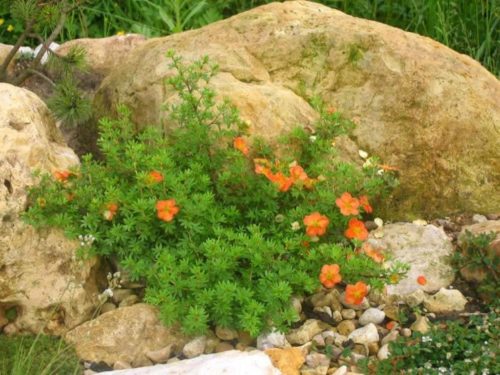
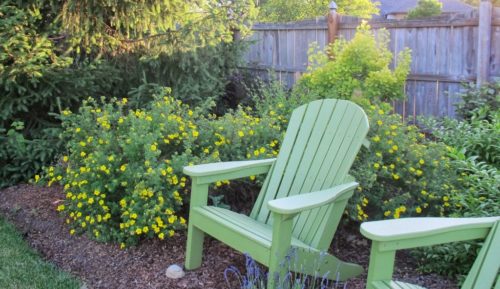
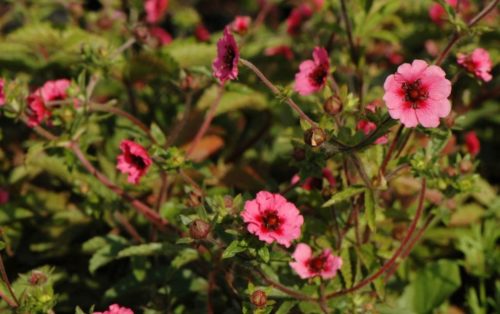
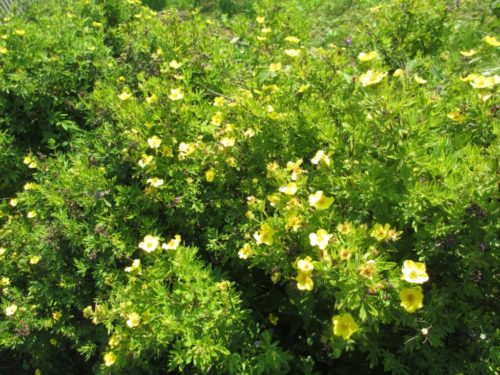
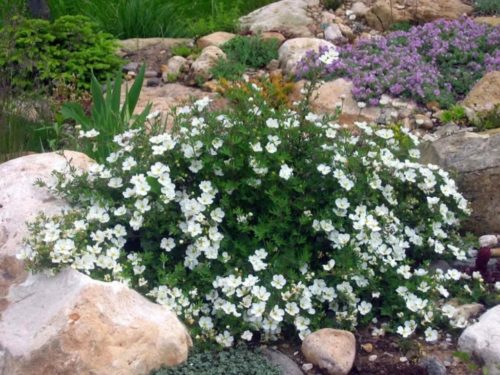
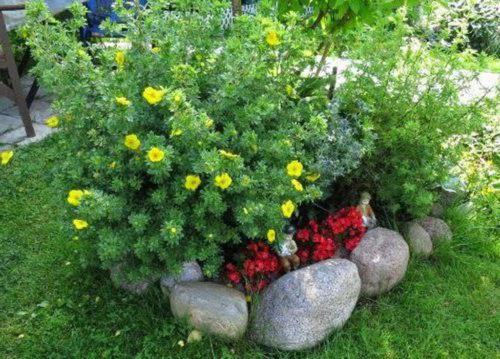
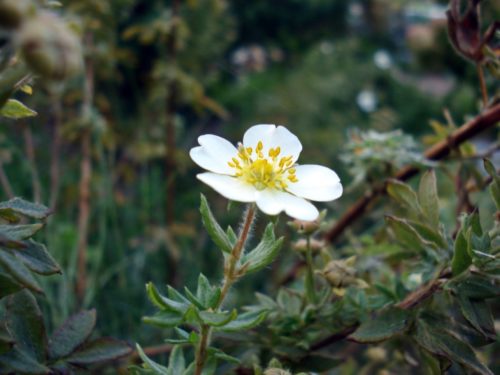
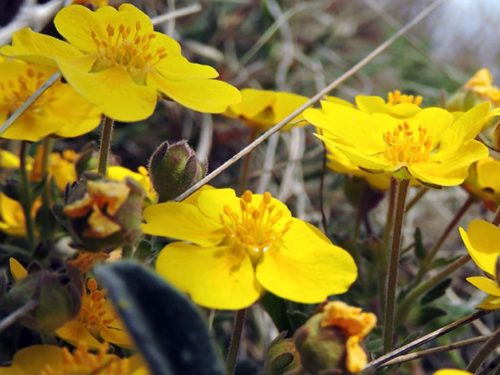
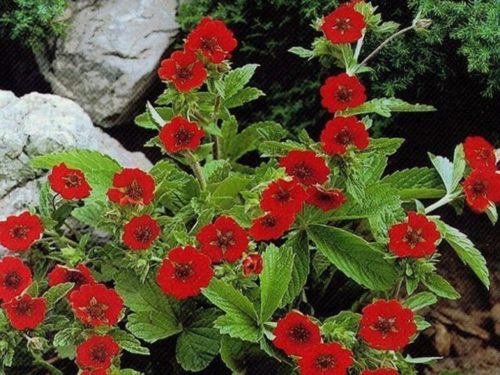












 Start a discussion ...
Start a discussion ...